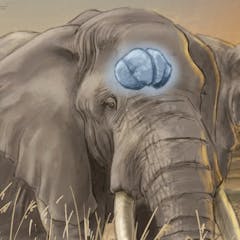
Articles on Whales
Displaying 41 - 60 of 153 articles

It’s usually good news when a once-scarce species starts to recover – unless it starts getting in humans’ way. An ecologist explains how science can help predict unwelcome encounters.

Whether you’re on the shore or a boat, seeing these giant mammals rise from the depths is always special. Knowing how to go about spotting a whale will improve your odds of experiencing this thrill.

There are some important issues to consider to best help marine species such as Atlantic puffins, bottlenose dolphins and orcas.

There have been just six verified sightings of the pygmy blue whale off Sydney in 18 years. Rare sightings like these are crucial, because the giants are considered ‘data deficient’.

Traditional ecological and cultural wisdom was embraced and valued, enhancing Western scientific knowledge of a beautiful, fragile marine area.

Bubble-net feeding is when whales blow bubbles from their nose to encircle their food, trapping their prey into a tight ball. A citizen scientist was the first to capture this behaviour in Australia.

Some animals, such as California sea lions, have small brains relative to their body size, but are still impressively intelligent, showing brain evolution is even more complex than it appears.

The cetacean brain has a specialised thermogenic system that helps the animal’s brain to produce enough heat to maintain a functional brain temperature.

Australia is considering removing humpback whales from the threatened species list after their numbers rebounded in recent decades. But the mammals face new threats.

By measuring how and when elephant seals sleep, researchers were able to figure out how elephant seals change their risk-taking behavior as they gain weight.

Through the whale’s journey from life to death, Caleb escapes the emotional toll of his situation, and finds his path forward.

Over six months, 73,991 tourists visited the continent. The potential to spread coronavirus to penguins, whales and other wildlife is enormous.

Whales are rediscovering their old haunts in the Arctic and Southern oceans after centuries of hunting.

For 200 years, a small number of countries have exploited the marine wildlife of Antarctica, often with devastating impact on their populations.

The strange appearance of three humpback whales in a Kakadu river threw up many questions – including whether they’d come out on top in a fight with a crocodile.

When humpback whales shift their distribution and behaviour, it can lead to unexpected human encounters and new challenges.

It’s time to listen to warnings from the people of the Pacific.

More than 450 long-finned pilot whales are stranded in Tasmania. Saving them is a race against time.

Whale breaches and tail slaps look great from a distance. But they can pose a threat if you want to get up close and swim with these giants of the ocean.

How we worked out when whales first evolved asymmetrical skulls.
